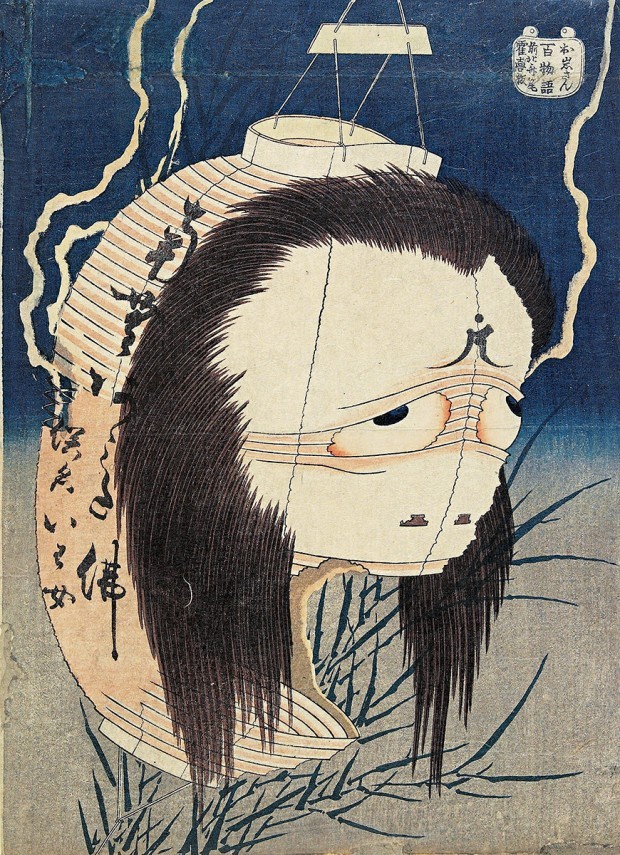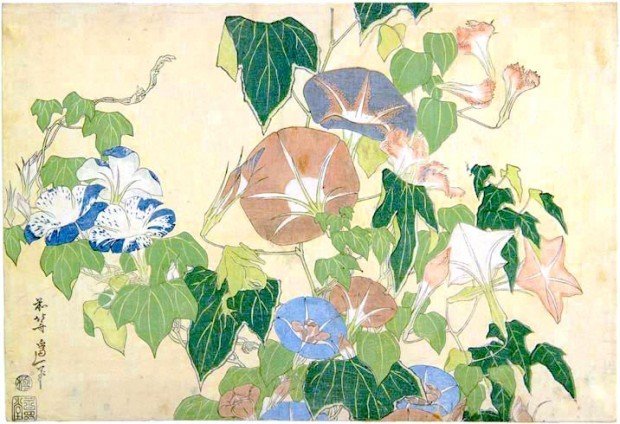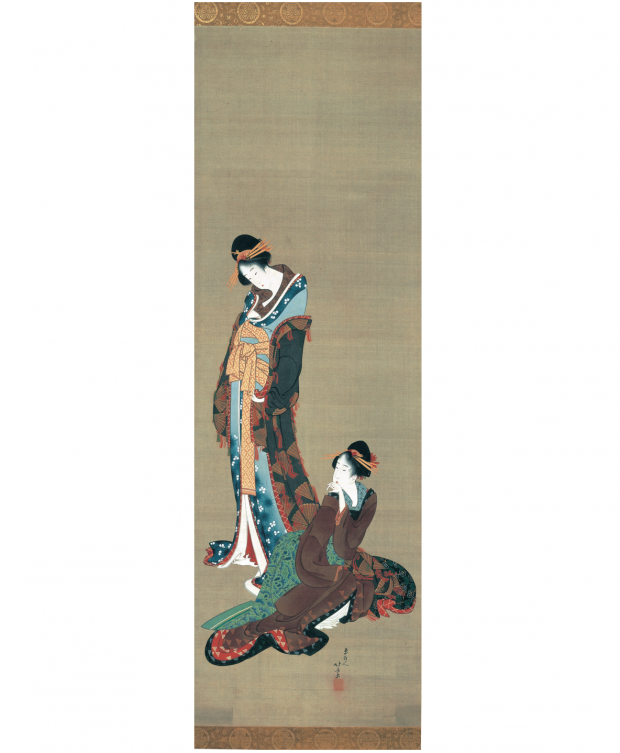As one of Japan’s most popular artists around the world, 葛飾北斎 (Katsushika Hokusai, 1760-1849), helped formulate the image of Japan and Japanese art for many foreigners, particularly in the late 19th century. In this series, we take a look at several motifs featured in Hokusai’s artwork that exemplify the beauty of Japan. In this article, we focus on the theme of 江戸 (Edo, 1603-1868, old Tokyo).
Deserving of his reputation, the Edokko Hokusai expressed the many trends of Edo—from fireworks to the grotesque and portraits of elegant beauties too!
Katsushika Hokusai was born in what was called Honjo Warigesui in Edo and is currently known as Kamezawa in the Sumida Ward of Tokyo. Known for having moved 93 times in his lifetime—mostly around the Honjo and Asakusa areas—Hokusai knew and understood the city of Edo very well. In fact, the artist knew Edo so well that we could say that no one else could portray the city better than Hokusai.
浮世絵 (Ukiyo-e, “pictures of the floating world”) originated in Osaka before further developing and attaining great popularity in Edo. As it centered on genre pictures, or images depicting the life and manners of the day, ukiyo-e artists naturally used the city of Edo as the backdrop and its citizens and ongoings as the subjects of their works. Yet, no other artist depicted Edo using such an array of subjects and themes as Hokusai did.
For example, as seen in 『新版浮絵両国喬夕涼花火見物之図』 (“Watching Fireworks on a Cool Summer Evening at Ryogoku Bridge” from the New Perspective series) shown below, Hokusai placed seasonal events and motifs that Edoites so looked forward to—like firework displays in the summer—within his genre and landscape pictures. On the other hand, in the 『百物語』 (One Hundred Ghost Tales) series and other similar works, we discover how Hokusai elevated the wildly grotesque and fantastical world of 妖怪 (yōkai, Japanese demons) to an art. Meanwhile, in his gorgeous 美人画 (bijinga, pictures of beautiful women), called 「二美人図」 (“Two Beauties”), Hokusai paints with originality and an exquisite sense of rhythm. This wide range of subjects and differing sensibilities embody the chic and fashionable tastes of Edo in Hokusai’s day.
From landscape and genre paintings to portraits of beautiful women and the fantastical, and then classical bird and flower paintings on top of that, Hokusai’s brush truly left nothing out. The charming atmosphere of Edo—a symbol for Japan and its aesthetics—were captured and brought to life by Hokusai’s brush.
A closer look
 “Watching Fireworks on a Cool Summer Evening at Ryōgoku Bridge” from the New Perspective series, c. 1786-89, oban-sized polychrome woodblock print, Sumida Hokusai Museum.
“Watching Fireworks on a Cool Summer Evening at Ryōgoku Bridge” from the New Perspective series, c. 1786-89, oban-sized polychrome woodblock print, Sumida Hokusai Museum.
At the time, Edo townspeople greatly anticipated viewing fireworks above the Sumida River from Ryōgoku bridge and the festive atmosphere that accompanied the annual event.This image was drawn by a young Hokusai in his late twenties, then going by the name 春朗 (Shunrō). Food stalls and boats line the edges of the Sumida River, while crowds of people gather around. This piece serves as a fascinating resource for understanding the life of Edoites. Among the works produced during Hokusai’s years as Shunrō, this print garnered popularity for its unique perspective, which was learned and adopted from linear perspective in Western paintings. The series was aptly named the New Perspective series.
 『百物語・お岩さん』 (“Oiwa” from the One Hundred Ghost Tales series), medium-format polychrome woodblock print, c. 1831. Image: Bridgeman Images/Pacific Press Service
『百物語・お岩さん』 (“Oiwa” from the One Hundred Ghost Tales series), medium-format polychrome woodblock print, c. 1831. Image: Bridgeman Images/Pacific Press Service
There is nothing that the tip of Hokusai’s brush could not paint in this world – even things like ocean spray and wind. Using that incredible ability of his, Hokusai was able to paint the fantastical world of yōkai—strange phenomena and demons—and other imaginative creatures. On summer nights in the Edo period, there was a game where people would sit around lighted candles and share one hundred ghost stories. After each story finished, one candle would be blown out. After the final candle’s flame was extinguished, it was believed that a yōkai would appear. Hokusai created a series based on this game called One Hundred Ghost Tales, and this print belongs to that series. Despite the scary subjects of these ukiyo-e, Hokusai’s drawings are somehow humorous.
 「朝顔に蛙」 (“Morning Glories and Tree Frog”), oban-sized polychrome woodblock print, c. 1831. Image: Bridgeman Images/Pacific Press Service
「朝顔に蛙」 (“Morning Glories and Tree Frog”), oban-sized polychrome woodblock print, c. 1831. Image: Bridgeman Images/Pacific Press Service
Morning glory flowers enjoyed popularity among Edoites and even now, morning glories bloom throughout Asakusa and the grounds of Asakusa Temple as they did in the past. In this print, Hokusai employs the bold and unconventional composition style that he is known for, yet imparts the plants with a delicate and pretty impression. Here we can catch a glimpse of Hokusai’s profound artistic sensibilities. This large-sized print predates the medium-sized bird and flower series which we introduced in our previous article. Here too we find a Rinpaesque design and perhaps this work chronicles his journey to becoming the Rinpa-style painter Tawaraya Sōrin.
By the way, can you spot the frog in the print above?
 “Two Beauties,” Important Cultural Property, scroll, color pigment on silk, 110.6 × 36.7 cm, c.1801-04, MOA Museum of Art.
“Two Beauties,” Important Cultural Property, scroll, color pigment on silk, 110.6 × 36.7 cm, c.1801-04, MOA Museum of Art.
This hand-painted scroll features the highest ranking courtesan of the Yoshiwara pleasure quarters and a geisha during the lavish and colorful days of Edo. Since Hokusai signed the work with his 「亀毛蛇足」 (Kimodasoku, meaning “Hair on the turtle, legs on the snake”) seal, it is believed to have been completed when Hokusai was around 40. (The Kimodasoku signature is found on privately commissioned prints designed by Hokusai, and these types of private commissions usually resulted in the most money for artists.) This work is also regarded as his most elegant bijinga, or picture of beautiful women. Though not seen here in the provided image, a three-leafed hollyhock crest can be found on the mounting, which reveals that this work was connected to a shogun family. Despite the narrow format, Hokusai has created a unique composition and achieved an exquisite balance using the two beautiful women.
Translated and adapted by Jennifer Myers.












